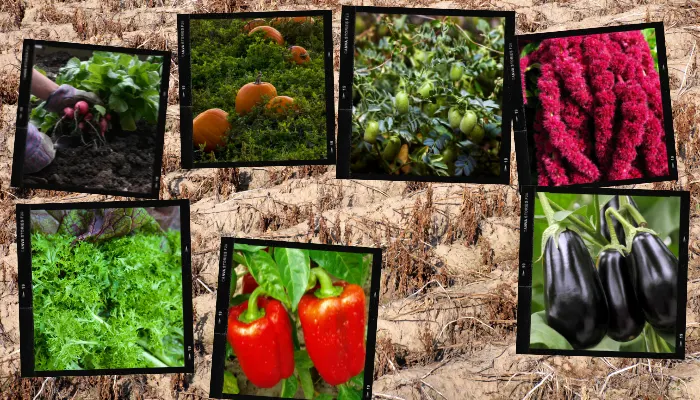Mistletoe: a name that conjures images of holiday cheer and festive decor. Yet, there’s more to this plant than meets the eye. Often misunderstood and shrouded in myths, mistletoe is a fascinating subject that spans history, folklore, and biology.
In exploring mistletoe, we dive into a world where ancient traditions intertwine with modern celebrations, and botanical realities challenge common beliefs. This article sheds light on the enigmatic nature of mistletoe, revealing its storied past, its varied uses over time, and its unique role in the ecosystem.
- The intriguing history and myths surrounding mistletoe.
- How mistletoe has been used historically and culturally.
- The truth about mistletoe’s parasitic lifestyle and its impact on trees.
Mistletoe has no smell, so anything that’s advertised as mistletoe scented is a lie.
The History of Mistletoe
The story of mistletoe takes us back centuries, to a time when mysticism blended seamlessly with the natural world. This plant has been a subject of fascination and reverence across various cultures throughout history.
Ancient Druids, for instance, viewed mistletoe as a symbol of vivacity and fertility due to its ability to flourish in the heart of winter. They believed it had magical properties, especially when found on oak trees, and used it in rituals for healing and prosperity. Similarly, Norse mythology narrates the tale of mistletoe being used as a weapon, yet later, as a symbol of love and reconciliation.
From these ancient roots, mistletoe evolved into a multifaceted symbol, embodying both supernatural beliefs and everyday customs. Its journey through the ages is a tapestry of human culture, interwoven with threads of folklore, religion, and medicine.

Of the 1,300 varieties of mistletoe, twenty are currently endangered. Pictured here is the now extinct Adam’s Mistletoe. Always check the Endangered Species List before picking mistletoe for your Christmas decor!
Mistletoe in Folklore and Medicine
Mistletoe’s journey is not only steeped in myth but also in the realm of traditional medicine and cultural practices. In various cultures, it has been a symbol of vitality and healing, often used for its supposed medicinal properties.
Historically, mistletoe was considered a remedy for numerous ailments. In traditional European medicine, it was used to treat everything from epilepsy to hypertension. The Greeks and Romans also utilized it for healing purposes, believing in its power to cure diseases and ward off evil.
Interestingly, the use of mistletoe extended beyond physical ailments. It was also a symbol of peace and reconciliation. In medieval times, it was customary to hang mistletoe as a sign of truce and to foster goodwill. This practice eventually morphed into the modern holiday tradition of kissing under the mistletoe.
Incorporating both ancient wisdom and modern practices, mistletoe’s role in folklore and medicine reflects its enduring appeal and the human penchant for blending the mystical with the practical.
Mistletoe is mostly spread through birds’ droppings, which helps to explain the origins of the word. The name comes from the Anglo-Saxon words “mist” and “tan,” which mean “dung twig” when translated.
Mistletoe and the Holiday Tradition
The leap from mistletoe as a medicinal herb and a peace symbol to a staple of Christmas decor is a fascinating tale. This evolution highlights how traditions transform and find new meanings over time.
The custom of kissing under the mistletoe can be traced back to ancient festivals and cultural practices. However, it was during the Victorian era that this tradition found its way into Christmas celebrations. It became a playful, romantic gesture, where a kiss under the mistletoe symbolized a request for a blessing from the spirits of the house.
This tradition also carried a promise of marriage and enduring love, embedding mistletoe firmly into the tapestry of holiday lore. Over the years, this practice has become a lighthearted and beloved part of holiday festivities around the world, further cementing mistletoe’s role in the season’s celebrations.
The Parasitic Nature of Mistletoe
Beneath its association with holiday cheer lies a less known, but biologically fascinating, aspect of mistletoe: its life as a hemiparasite. This characteristic is key to understanding the plant’s impact on its environment.

Unlike most plants that draw all their nutrients from the soil, mistletoe latches onto the branches of host trees. It sends out roots that penetrate the tree’s bark to siphon off water and essential nutrients. While mistletoe is capable of photosynthesis and does produce some of its own food, it relies heavily on its host for sustenance.
This parasitic relationship can have significant effects on the host trees. While mistletoe rarely kills a tree directly, heavy infestation can weaken a tree, making it more susceptible to disease and environmental stressors. In some cases, branches or even whole sections of a tree can die because of severe mistletoe infestation.
Understanding this aspect of mistletoe not only adds depth to our perception of this holiday icon but also highlights the intricate and sometimes harsh realities of nature.
Rethinking Mistletoe Management: A Practical Guide
Managing mistletoe isn’t just about preserving tree health; it’s an art that balances ecological awareness with practical gardening skills.
The first step is to regularly monitor your trees. Catching mistletoe early can make a world of difference. Look out for its distinctive green shoots and white berries, especially in the dormant seasons when trees lose their leaves.
Pruning isn’t just cutting away branches. It’s about understanding tree anatomy. When removing mistletoe, it’s important to cut back to the branch collar — the area where the branch connects to the trunk or another branch. This helps the tree heal properly and prevents mistletoe from re-emerging.
Monitoring and pruning your trees may not be enough. Mistletoe seeds spread primarily by birds so, a fun, yet effective strategy is to attract these birds away from infested areas. Setting up bird feeders or planting bird-attracting flora at a distance can redirect their activity, reducing the spread of mistletoe seeds.
As with most things in life, sometimes, the situation calls for professional help. Certified arborists can provide tailored advice and execute precise treatments. They might even use specialized techniques like injecting growth regulators to slow mistletoe growth without harming the tree.
Now, while mistletoe is a parasite, in some cases, where mistletoe doesn’t pose a significant threat, embracing its presence is a viable option. After all, it’s a part of the ecosystem and has its own role to play.
This approach to mistletoe management not only safeguards our trees but also enriches our understanding and appreciation of the natural world.
More To Discover
- Dog First Aid: Essential Skills, Techniques, and Kit Every Dog Owner Should Know
- Greenwash Update: Checking In On Coca-Cola and Starbucks’ Previous Environmental Claims
- New Side Hustle: Duck Egg Prices Are Soaring, Now Is The Time To Let Your Kids Have New Pets That Pay for Themselves
- The Marketing And Manipulation That Created The Faux Icon And Normalized The Consumption of Known Carcinogens
Conclusion
Mistletoe, often seen as a simple symbol of holiday romance, is in fact a plant with a rich tapestry of history, mystery, and ecological intrigue. From its ancient roots in mythology and medicine to its modern-day role in festive traditions, mistletoe is a plant that has captivated humans for centuries.
We’ve explored its historical significance, unearthed its medicinal past, and delved into its iconic status in holiday lore. Moreover, understanding its parasitic nature and learning effective management strategies reveals the complex relationship between this plant and its environment.
For those intrigued by the blend of cultural heritage and natural science, a deeper dive into the world of ethnobotany or holiday folklore could be a fascinating next step. These fields offer a treasure trove of insights into how plants like mistletoe have shaped human culture and vice versa.
Mistletoe’s story is a reminder of nature’s multifaceted role in our lives — a symbol of love, a tool for healing, and a participant in the ecological dance of life.
















